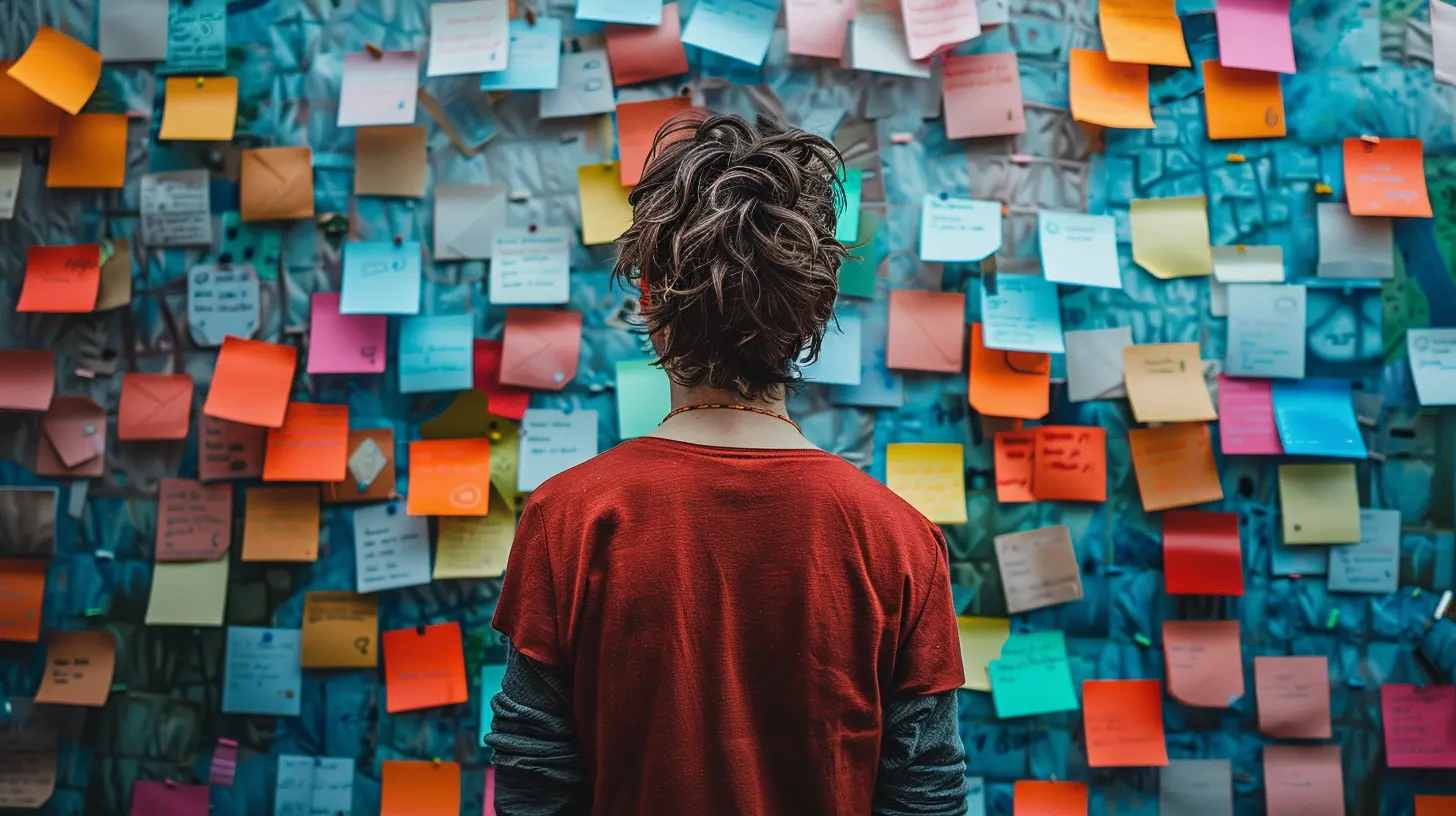26 November 2025
Let’s be honest—studying can be a total drag, right? You sit down with your books, highlighters, and half a cup of cold coffee hoping something will magically stick. But more often than not, you spend hours reading, rereading, and still forgetting half of it a few days later.
Sound familiar?
I’ve been there too. And guess what? There’s a better way to study—one that’s both brain-friendly and time-efficient. It's all about using flashcards effectively with two powerful techniques: spaced repetition and retrieval practice.
So, if you're tired of cramming and forgetting, this article is for you. Let’s dive into how these methods can change the way you study, once and for all.
Why Flashcards Work (When Used the Right Way)
Before we get into the science-y stuff, let’s talk basics.Flashcards are pretty simple. You write a question on one side and the answer on the other. But this simplicity is what makes them incredibly flexible and powerful. They’re portable, customizable, and adaptable to just about any subject you’re learning—from vocabulary in a new language to historical facts to complex science concepts.
But here’s the catch: not all flashcard habits are created equal. If you’re just flipping through them over and over, that’s not going to stick long-term.
So what actually makes flashcards effective?
Two key methods: spaced repetition and retrieval practice. These aren’t new, trendy gimmicks. They’re backed by decades of cognitive psychology research.
Let’s break them down.
What is Spaced Repetition?
Think of your brain like a leaky bucket. You pour in knowledge, but over time, it drips out. Spaced repetition is like plugging those holes gradually so more knowledge sticks.The Forgetting Curve
Ever crammed for a test, did great the next day, and then forgot everything a week later? That’s called the forgetting curve. This curve shows how quickly we forget new information unless we actively do something about it.Spaced repetition works by reviewing information at increasing intervals over time—right before you're about to forget it. Every time you review, the gap gets longer. Slowly, your brain says, "Okay, this is important. Let me file this away properly."
An Everyday Analogy
Imagine watering a plant. If you water it too often (aka cram), it drowns. If you forget to water it altogether (no review), it wilts. Spaced repetition is like finding that sweet spot—just enough water, just at the right time.
What is Retrieval Practice?
Let’s get one thing straight: re-reading isn't studying. It feels productive, but it’s passive. Retrieval practice flips that on its head.Active Recall in Action
Retrieval practice is all about pulling information out of your brain, not just soaking it in. When you use flashcards to quiz yourself, you're forcing your brain to retrieve information. That mental struggle is where the magic happens. Struggling = learning.It’s like going to the gym. You don’t build muscle by just watching other people lift weights. You’ve got to do the heavy lifting yourself.
Why It Works So Well
When you recall something, your brain strengthens the neural pathways associated with that info. The more you practice retrieving it, the easier it becomes to retrieve it in the future, whether on a test or in real life.
Bringing the Two Together: The Ultimate Combo
Individually, spaced repetition and retrieval practice are powerful. But together? They're unstoppable.Let’s say you're studying for a biology exam. You’ve got a stack of flashcards. With spaced repetition, you review the cards you struggle with more frequently. With retrieval practice, you avoid flipping the card for the answer until you’ve tried recalling it on your own.
Over time, your deck naturally adapts. The easier cards go to the back of the pile (less frequent review), and the trickier ones stay up front (more frequent review). Your brain is being trained like an athlete for a championship—efficiently and effectively.
How to Create Effective Flashcards
Now that we know the theory, let’s get practical. Not all flashcards are helpful. Making great ones is an art.1. Make One Fact Per Card
Don’t overload the card with info. Keep it simple. One question, one answer. Instead of writing “Explain photosynthesis,” go with “What is the main pigment used in photosynthesis?”Smaller snippets = easier recall and better learning.
2. Use Your Own Words
Your brain remembers better when it’s in your own language. If you copy and paste from a textbook, you’re not engaging with the material. Rephrase, simplify, make it yours.3. Include Visuals (When It Helps)
If you’re a visual learner, don’t ignore pictures. For anatomy, maps, or complex diagrams, images can help reinforce memory pathways.4. Add Mnemonics or Analogies
Can’t remember the order of planets? Use “My Very Educated Mother Just Served Us Noodles.” Mnemonics and analogies turn dry facts into sticky ones.Choosing the Right Tools: Digital vs. Paper Flashcards
Both have their pros and cons.Paper Flashcards
- ✅ Tangible and customizable- ✅ Helps avoid digital distractions
- ❌ Harder to space out reviews manually
Digital Flashcards (Like Anki, Quizlet)
- ✅ Built-in spaced repetition algorithms- ✅ Easier to carry around
- ✅ Sync across devices
- ❌ Might encourage multitasking or screen fatigue
My advice? Try both and stick with the one you’ll actually use consistently.
How to Use Flashcards with Spaced Repetition
Let’s get practical again. Here's how to bring spaced repetition into your routine.Use a System Like the Leitner Box
Leitner system is simple:1. Start all cards in Box 1 (daily review).
2. If you get a card right, move it to Box 2 (review every 3 days).
3. Get it right again? Box 3 (review every week).
4. Get it wrong? Move it back to Box 1.
That’s spaced repetition in action—manually.
Or Use an App Like Anki
Anki is a spaced repetition app that does the heavy lifting for you. It tracks which cards you’re struggling with and spaces the reviews accordingly. You just focus on showing up and practicing.Tips to Max Out Your Flashcard Sessions
You’ve got the flashcards and the plan. How do you keep it engaging and productive?1. Study in Short Bursts
Don’t marathon flashcard sessions. Aim for 20–30 minutes at a time. Our brains love chunked learning.2. Think Before Flipping
Don’t rush to look at the answer. Pause. Try to recall. That hesitation solidifies learning.3. Shuffle Regularly
Mix up the order to avoid memorizing based on sequence.4. Combine with Other Study Methods
Flashcards are great, but don’t rely on them alone. Mix them with practice problems, mind maps, or group discussions for deeper learning.Common Mistakes to Avoid
Even the best tools can fall flat if used poorly. Watch out for these traps:- 🔁 Mindless repetition: Just flipping cards isn’t retrieval practice.
- 📚 Over-complicated cards: One card, one fact. Keep it simple.
- 💤 Cramming: Using flashcards the night before doesn’t equal spaced repetition.
- 🚫 Ignoring wrong cards: Review the toughest ones more often, not less.
- ⏱️ Procrastinating: Consistency beats intensity. Stick to a regular schedule.
Real Talk: Does This Really Work?
You bet. So many students (myself included) have turned their grades around just by studying smarter, not harder. Flashcards, when paired with spaced repetition and retrieval practice, can feel like a cheat code for learning.But here’s the thing: consistency is key. This isn’t a magic hack that works in one night. It’s about committing to small, consistent efforts over time. Like brushing your teeth—tiny actions with long-term payoff.
And honestly, once you experience that “Whoa, I actually remembered it!” moment, you’ll be hooked.
Final Thoughts
Flashcards aren’t new or flashy. But used the right way—with spaced repetition and retrieval practice—they become one of the most powerful tools in your academic arsenal.It’s like upgrading from a bicycle to a motorbike. You’ll go farther, faster, with less struggle.
So the next time you're flipping through flashcards, remember: it’s not about how many you do, it’s about how purposefully you do them. Be active, space them out, and stay consistent.
Your future self (and your GPA) will thank you.




Caleb Cantu
Oh, great! Because nothing screams “fun” like cramming facts into your brain with flashcards. Who needs a social life when you can enjoy the exhilarating thrill of spaced repetition and retrieval practice? Party on, knowledge warriors! 🎉📚
November 26, 2025 at 11:58 AM